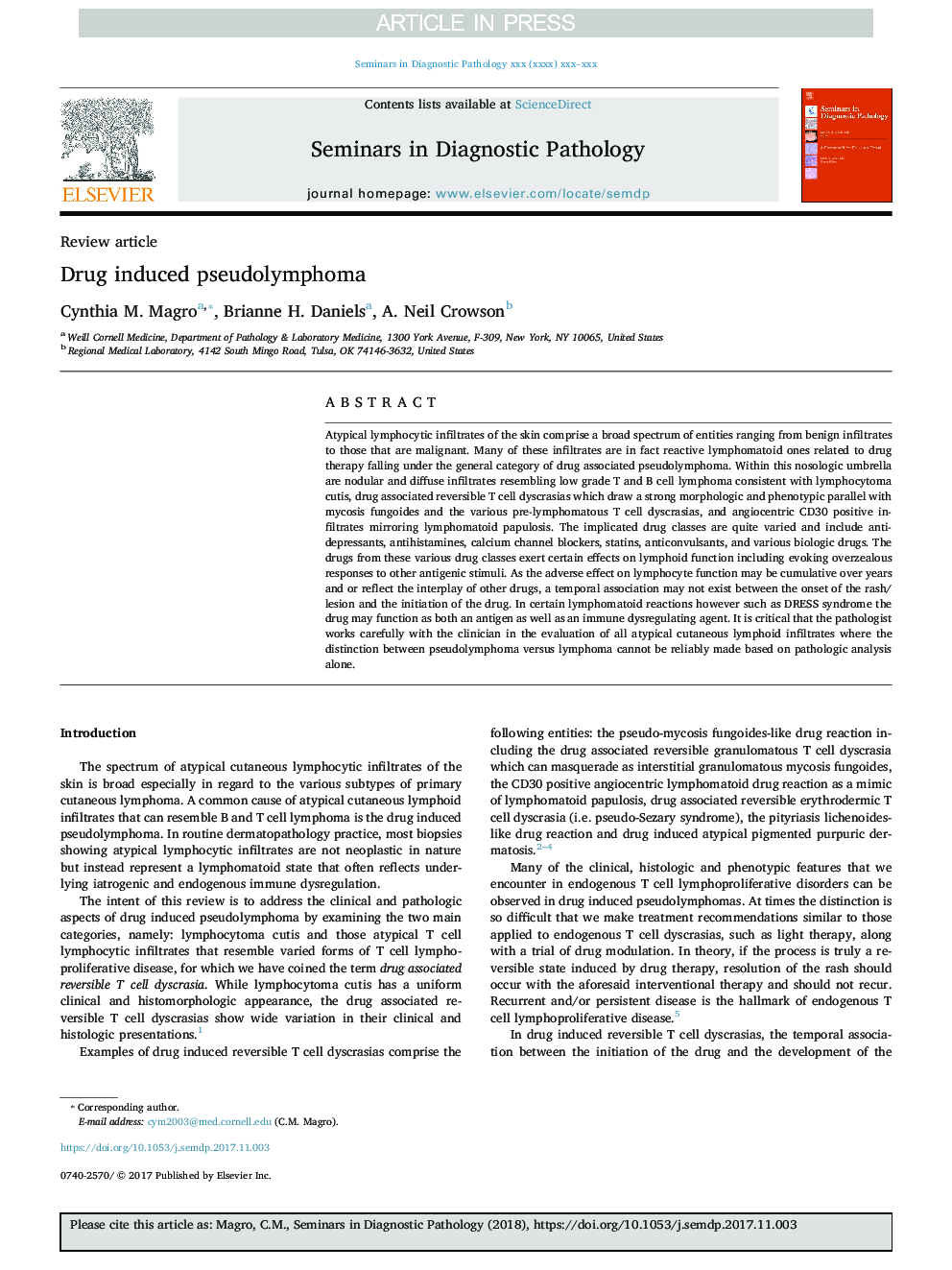| Article ID | Journal | Published Year | Pages | File Type |
|---|---|---|---|---|
| 8808020 | Seminars in Diagnostic Pathology | 2018 | 13 Pages |
Abstract
Atypical lymphocytic infiltrates of the skin comprise a broad spectrum of entities ranging from benign infiltrates to those that are malignant. Many of these infiltrates are in fact reactive lymphomatoid ones related to drug therapy falling under the general category of drug associated pseudolymphoma. Within this nosologic umbrella are nodular and diffuse infiltrates resembling low grade T and B cell lymphoma consistent with lymphocytoma cutis, drug associated reversible T cell dyscrasias which draw a strong morphologic and phenotypic parallel with mycosis fungoides and the various pre-lymphomatous T cell dyscrasias, and angiocentric CD30 positive infiltrates mirroring lymphomatoid papulosis. The implicated drug classes are quite varied and include antidepressants, antihistamines, calcium channel blockers, statins, anticonvulsants, and various biologic drugs. The drugs from these various drug classes exert certain effects on lymphoid function including evoking overzealous responses to other antigenic stimuli. As the adverse effect on lymphocyte function may be cumulative over years and or reflect the interplay of other drugs, a temporal association may not exist between the onset of the rash/lesion and the initiation of the drug. In certain lymphomatoid reactions however such as DRESS syndrome the drug may function as both an antigen as well as an immune dysregulating agent. It is critical that the pathologist works carefully with the clinician in the evaluation of all atypical cutaneous lymphoid infiltrates where the distinction between pseudolymphoma versus lymphoma cannot be reliably made based on pathologic analysis alone.
Related Topics
Health Sciences
Medicine and Dentistry
Pathology and Medical Technology
Authors
Cynthia M. Magro, Brianne H. Daniels, A. Neil Crowson,
